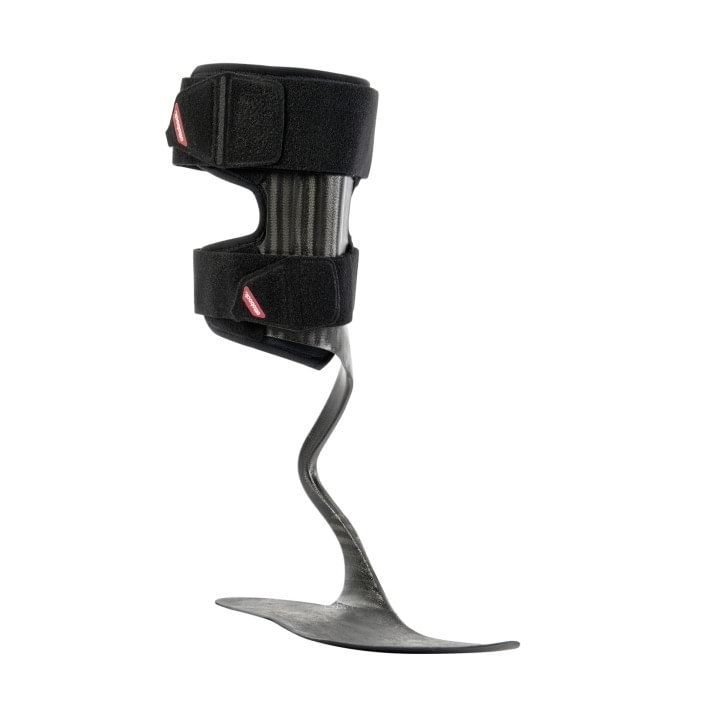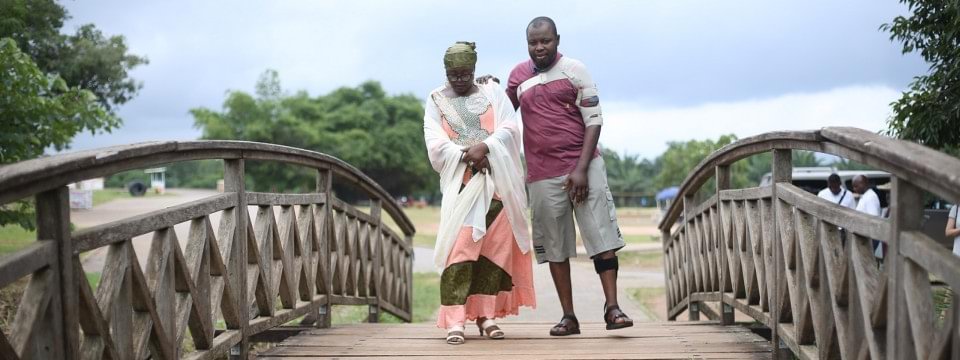Stroke
In approximately 79 % of all stroke cases, a blood vessel that supplies the brain is blocked, e.g. by a blood clot. This results in an insufficient blood supply. Nearly 13 % of patients suffer exactly the opposite, namely bleeding in the brain, due to damaged vessels. In both cases, the supply of blood to certain regions of the brain is no longer sufficient due to a local circulatory disturbance.
But even if treatment is given very quickly, two thirds of stroke survivors sustain some damage. The good news is that the brain is capable of regenerating. Slightly damaged cells can be partially, or in a best-case scenario, completely restored. With specific training, other healthy nerve cells can also assume their function. This is called neuroplasticity.
Symptoms
The symptoms of stroke can vary widely between individuals, also in regards to their severity. They include:
- Impaired vision
- Restricted field of vision
- Disruptions of depth perception, seeing double
- Speech and language comprehension disturbances
- Paralysis, numbness
- Disrupted touch sensation
- Drooping corner of the mouth – such dysfunctions can also occur in the leg and arm (drop foot and wrist drop)
- Shoulder pain
- Unstable knee joint function while standing
- Torso instability
- Dizziness with uncertain gait
- Spasticity of various forms and severity
Rehabilitation
According to the federal rehabilitation workgroup, what is known as a phase model applies in the field of neurological rehabilitation. Initially the patient's need for help is assessed by the attending doctor and therapist. A certain rehabilitation phase can be considered depending on the patient's need for help. Neurological rehabilitation is divided into the following phases:
- Phase A: Acute medical treatment
- Phase B: Medical-therapeutic rehabilitation, early rehabilitation (in part still with the most severe limitations (coma) for most severely affected patients, whose ability to participate in treatment is limited)
- Phase C: Medical-therapeutic rehabilitation, (impairment of self-sufficiency)
- Phase D: Medical-therapeutic rehabilitation (movement possible at the ward level)
- Phase E: Medical-occupational rehabilitation (reintegration, reorientation if applicable)
- Phase F: Curative care, measures to maintain the current condition
A lot has been accomplished in acute care in recent years. With modern medical devices, Ottobock pursues the goal of focusing more on rehabilitation that follows acute patient care. From wheelchairs to provide support in the early rehabilitation phase, to products for dorsal flexor weakness (orthoses, functional electrical stimulation (FES) in the form of surface stimulation or as an implant) to orthoses that stabilise the shoulder, knee and wrist joint, Ottobock offers a broad portfolio of modern product solutions.
Products
Stroke patients typically experience impairment of mobility in the shoulder, hand, knee and foot. Often one side of the body is completely or partially paralysed and has sensory deficits. The following medical devices were developed especially for stroke patients. They are designed to help you be more active, more independent in your daily life, and continue to develop dexterity and muscle strength. Many devices also relieve pain and protect against uncontrolled movement.

Omo Neurexa plus
The Omo Neurexa plus shoulder orthosis provides noticeable relief, alleviates pain and leads to a better overall body posture. It can be applied by patients themselves with one hand.

Manu Neurexa plus
The orthosis positions and stabilises the wrist joint. It is suitable for neurological limitations as well as nerve damage in the area of the arm, wrist and hand.

Genu Neurexa
The Genu Neurexa provides good support after a stroke. It stabilises the knee and prevents overextension of the knee joint. Bending the knee continues to be possible.

WalkOn and WalkOn Trimable
The WalkOn/Trimable helps lift the foot when the foot lifting musculature is paralysed, and stabilises the ankle with slight support for a physiological gait pattern.

WalkOn Flex
The WalkOn flex helps lift the foot when the foot lifting musculature is paralysed, while permitting maximum freedom of movement.

WalkOn Reaction
The WalkOn Reaction uses the ground reaction force to help lift the foot and raise the knee joint in case of minor paralysis of the lower limbs.

Unilateral joint system
The unilateral joint system provides an integrated solution in case of paresis or paralysis of the leg musculature.

Start M3 Hemi
The Start M3 Hemi is particularly well suited for stroke patients with hemiplegia. Its wider foot space makes propulsion by "toddling" with the feet on the floor easier.
The products shown are fitting examples. Whether a product is actually suitable for you and whether you are capable of exploiting the functionality of the product to its fullest depends on many different factors. Amongst others, your physical condition, fitness and a detailed medical examination are key. Your doctor or orthopaedic technician will also decide which fitting is most suited to you. We are happy to support you.

